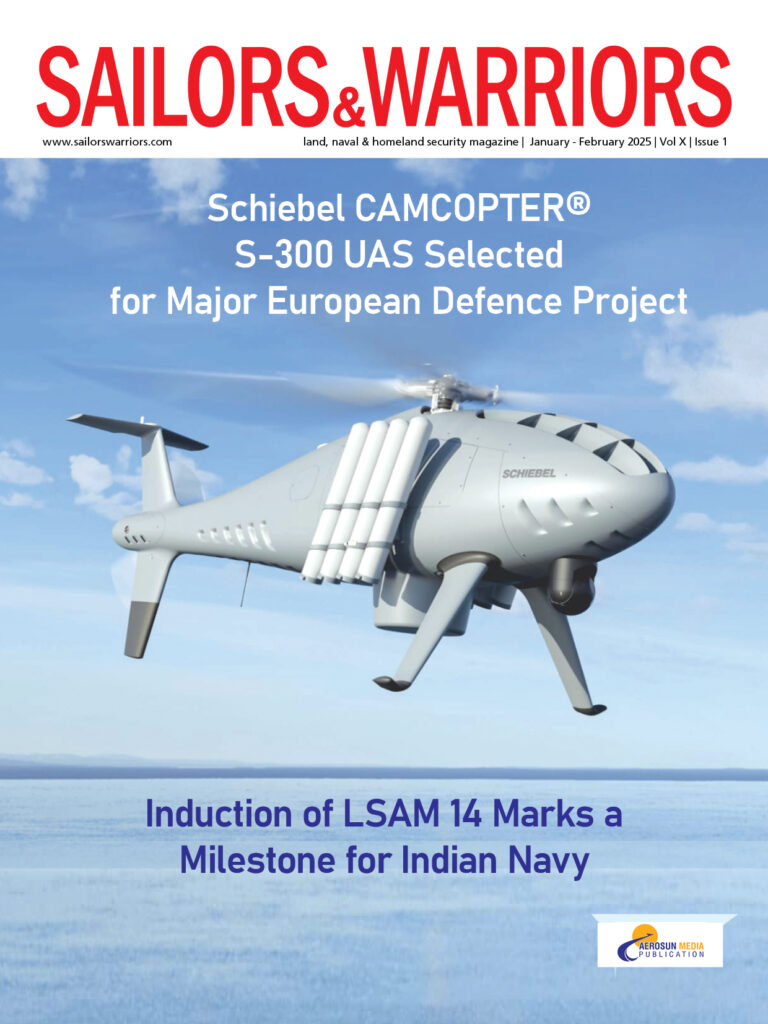 Schiebel’s CAMCOPTER® S-100 Vertical Takeoff and Landing (VTOL) Unmanned Air System (UAS) is currently in use on five continents with 33 customers. More than 350 Unmanned Air Vehicles (UAV) have flown a total of 100,000 hours so far. The S-100’s small footprint makes it the ideal solution for small ships and it has operated from more than 30 different ships with 10,000 maritime flight hours and 2,000 deck landings to date.
Schiebel’s CAMCOPTER® S-100 Vertical Takeoff and Landing (VTOL) Unmanned Air System (UAS) is currently in use on five continents with 33 customers. More than 350 Unmanned Air Vehicles (UAV) have flown a total of 100,000 hours so far. The S-100’s small footprint makes it the ideal solution for small ships and it has operated from more than 30 different ships with 10,000 maritime flight hours and 2,000 deck landings to date.
The overall maximum payload capacity is 50 kg and the multi-role, multi-domain asset has the ability to carry multiple sensors or other payloads such as cargo. One of its capabilities includes Manned-Unmanned Teaming, which was demonstrated in cooperation with Airbus and its H145 helicopter. The S-100 achieved a Level of Interoperability (LOI) 5, which means it can be fully controlled from the operator in the helicopter, from takeoff to landing, receiving all information on board the manned aircraft.
Most recently, the French Navy acquired four additional S-100 UAVs, which will be integrated on their Mistral-class amphibious helicopter carriers Tonnere and Mistral. The initial two S-100s were already fully integrated on their helicopter carrier Dixmude. This was the first time in Europe, a rotary wing UAS was fully operational and connected to the defence system of an amphibious helicopter carrier.
In August 2020, Schiebel together with Nordic Unmanned carried out the world’s first full-scale offshore UAV delivery from shore to an active oil and gas installation for Equinor. The demonstration simulated the scenario of an urgent requirement for spare parts at the gas production Troll A in Norway. The CAMCOPTER® S-100 successfully carried out the long-range delivery and the demonstration also included an aerial platform inspection as well as a simulated search and rescue mission.
Meanwhile in Australia, the Royal Australian Navy (RAN) has been operating the CAMCOPTER® S-100 since 2018. Currently, the RAN UAVs are fitted with Schiebel’s proprietary heavy fuel engine, the S2. Given the single fuel policy adopted by the world’s navies, the heavy fuel engine is Schiebel’s alternative option to its current propulsion unit.
Another client of note is the European Maritime Safety Agency (EMSA). Schiebel was awarded a contract from EMSA back in 2018 and has flown many missions for them so far. The operations include maritime surveillance, coast guard functions, search and rescue as well as emission monitoring. In 2020, the S-100 was operated for EMSA in France, Denmark, Croatia and Finland.
The proven system is ideally suited for land and maritime operations and its flexible and versatile capabilities allow Schiebel’s customers to utilise the UAV for numerous different operations, be it at land or at sea.


